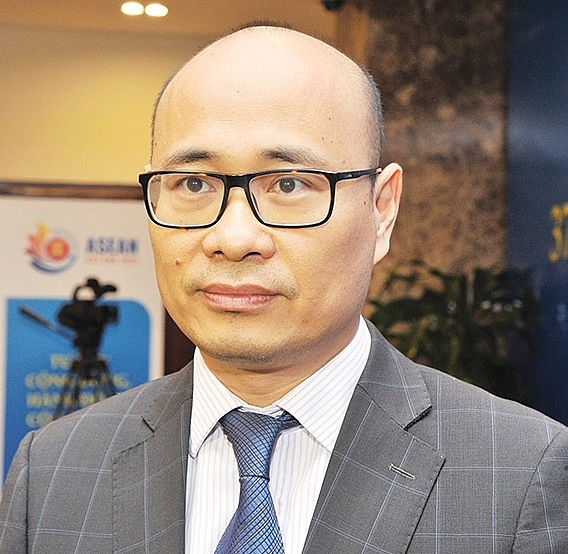Luong Hoang Thai, director general of the Multilateral Trade Policy Department under the Ministry of Industry and Trade, explained to Phuong Thu how the new deal would help global businesses entering the integrated ASEAN market.
The Regional Comprehensive Economic Partnership (RCEP) creates a very large market with over 2.3 billion consumers, around 30 per cent of the world’s population. How can it help attract foreign direct investment (FDI) in the region and Vietnam in particular?
 |
|
Luong Hoang Thai, director general of the Multilateral Trade Policy Department under the Ministry of Industry and Trade
|
With commitments to open markets in the areas of goods and services, investment, and harmonisation of rules of origin among all participants, as well as strengthen trade facilitation measures, the RCEP will create opportunities to develop new supply chains in the region, thereby stimulating investment in supply chain development.
Although it does not open up new markets per se because ASEAN including Vietnam already has free trade agreements (FTAs) with other countries in the bloc, it promotes a wave of investment thanks to the sheer scale of the market. It covers a GDP of nearly $27 trillion, accounting for about 30 per cent of global GDP, and will become the largest free trade region in the world.
What sectors will prove especially attractive for investors?
Along with ASEAN members, Vietnam has a chance to become a destination to attract FDI from fellow members. Telecoms, textiles, footwear, and electronics are just some of the areas that Vietnam has potential in to attract FDI.
The prosperity and large market size of the RCEP bloc will also make it become the focus of global investors, and they will of course choose the destination that will bring the most benefits to them.
Currently, a number of countries such as China, Japan, South Korea, and Singapore are speeding up investment abroad to expand production and supply chains. However, the deal’s impact on FDI attraction depends on each country, such as national investment attraction policies, as well as policies for each specific field. These factors are a very important basis for investors to consider and decide where to pour their money.
How can Vietnamese goods get the edge over their regional counterparts, and are there any concerns about the deal increasing Vietnam’s trade deficit with some members?
The RCEP brings benefits to all members, but each country has different areas of interest to focus on. The RCEP coming into effect will increase competitive pressure because many economies in the bloc share important structural features, and some are even stronger and more competitive than Vietnam when it comes to certain products.
In practice, however, the RCEP is essentially a framework that connects ASEAN’s existing commitments with each of the five external partners to facilitate trade and thus boost investment.
Therefore, the agreement does not carry commitments of higher market opening for Vietnam nor will it add competitive pressure that did not exist before. In essence, it will make more favourable conditions for enterprises, especially small- and medium-sized ones.
It is important to increase the competitiveness of Vietnamese goods as well as improve the country’s position in the regional value chain. Accordingly, in addition to synchronous solutions from the government, ministries, businesses, and associations need to actively seek information about FTAs to firmly grasp Vietnam’s commitments.
Local enterprises also need to proactively change their business thinking to better fit the new context, turning competition pressure into a driving force for self-innovation and development. VIR
Phuong Thu

Vietnam’s strong industries fully tapped under RCEP
The Regional Comprehensive Economic Partnership (RCEP) is expected to boost regional and global supply chains and the economy of ASEAN members and partners.